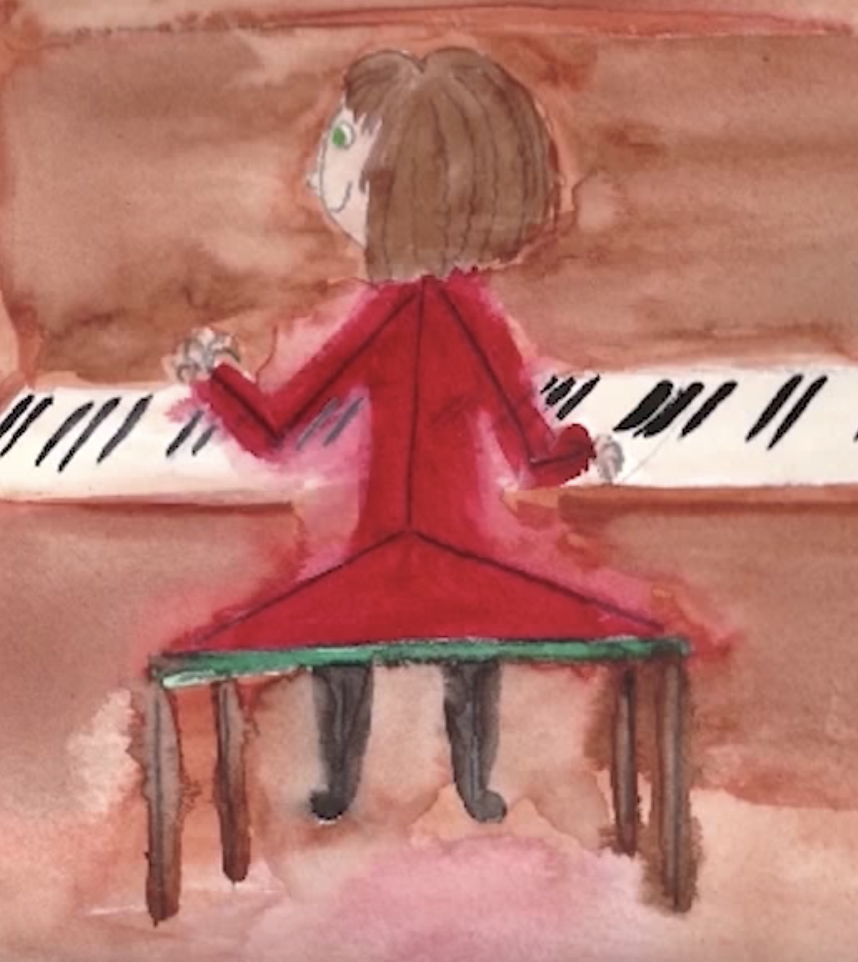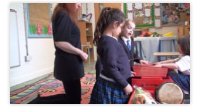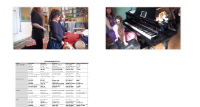Maestro & the Christmas Tree Level: Key Stage 1 - Creative music
Music Lesson Description
Making Up Maestro Music! (uses all the elements of music)
Any child can experiment with choosing notes on a piano, keyboard or tuned percussion instrument for making up their own, original music. In this video, Luchia had only just started piano lessons and was making up music to represent some of the themes in a Maestro story. At the end she sings a lovely little lullaby to Maestro that she spontaneously made up there and then. None of what Luchia plays in this video has been is pre-rehearsed - it all took place as you see it.
If you have a school piano or keyboard, you could replicate parts of this video with individual children. A good take-away idea for guiding children in making up music is to ask them to use repetition of ideas and notes rather than playing a continuously changing stream of experimentation.
What did Hannah play? (pitch)
This is a music corner activity for pairs of children helped by an adult. Each child needs chime bars or a xylophone to pick out the first part of a Christmas tune they know (or any other tune).
Prepare to help the children by asking what songs they know beforehand. Do keep it simple - for example, everyone is likely to succeed with the first line of Jingle Bells but not with And So This is Christmas! We wish You a Merry Christmas and We Three Kings are popular choices.

Motifs (timbre, dynamics)
For this activity you could optionally use the book of Maestro the Dog and the Christmas Tree.
Each character of the story has a 'signature tune' in the video. In groups, the children go to the music corner and choose an instrument to represent each of the characters in the story (this is where the book could help them to remember). This works best if an adult is there to act as a sounding board and new-word-supplier for the choices eg would the elephant make a loud sound or a quiet one? Would it be more suited to a big drum or a tiny pair of Indian bells, and why?
If you are using the book, the adult reads the story again with the children supplying the sounds they chose, at appropriate times in the story.

A note on creativity
Picking out a tune you already know is generally called playing by ear. It's different from improvising, which means spontaneously making up music, often using a planned framework. It's also different from composing, which is making up your own original music from scratch resulting in a definite, end-product piece of music. I've found, when teaching adults, that their default response to being asked to make up music is that they try to play a tune they already know whereas children are happy to doodle around and come up with something original. If the children aimlessly play the bars of a xylophone up and down again, influence their choices by removing some of the bars and keeping just C, D, E, G and A (a pentatonic scale). You'll find that the quality of their creation improves through using fewer notes. On a piano you can create the same effect by asking the children to use only the black keys.






